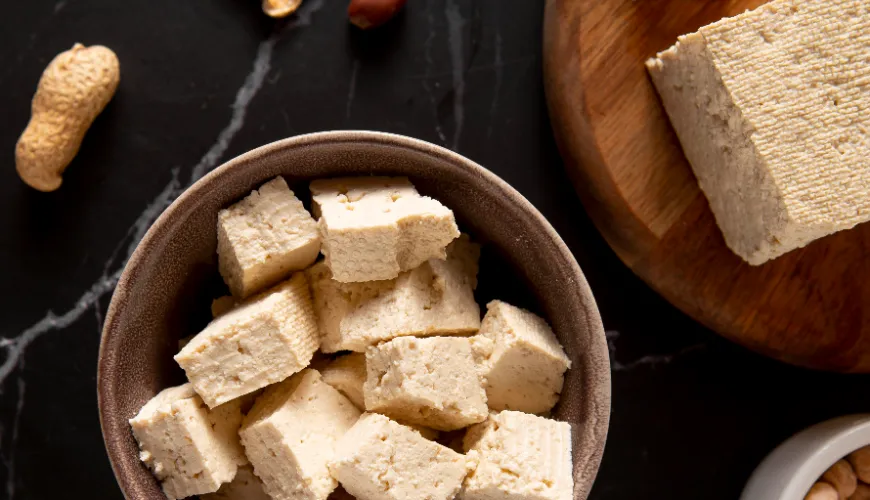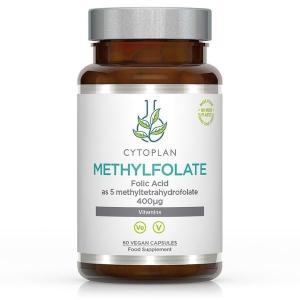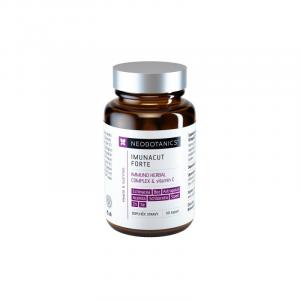
Tempeh as an Ideal Meat Substitute for Modern Cuisine

Tempeh is a fermented product made primarily from soybeans, which is becoming increasingly popular due to its nutritional values and versatility in the kitchen. Although its origins can be traced back to Indonesia, it is gradually finding its place in modern and healthy diets around the world.
Origin of Tempeh
The origin of tempeh can be traced back to Indonesia, where it has been traditionally produced for centuries. In Indonesian cuisine, tempeh is a staple food that is commonly used in various dishes. Many Indonesians believe that tempeh not only has numerous nutritional benefits but also contributes to longevity and health. Traditionally, tempeh is made at home, where each family has its own tried-and-true recipe for its preparation. Today, of course, tempeh is also produced industrially and is available worldwide.
Nutritional Benefits of Tempeh
The main advantage of tempeh is its high protein content, making it a great meat substitute not only for vegetarians and vegans but also for anyone seeking healthier alternatives. The proteins found in tempeh are complete, meaning they contain all the essential amino acids that our body needs to function properly. Additionally, tempeh is rich in fiber, B vitamins, and minerals such as iron, calcium, and magnesium.
Try our natural products
Thanks to fermentation, it is also more digestible than other soy products. Fermentation breaks down antinutritional substances that can hinder digestion and the absorption of nutrients. This means that the nutrients contained in tempeh are more accessible and usable by our body. Moreover, fermentation increases the content of beneficial bacteria that support gut health.
Another advantage of tempeh is its positive effect on gut microbiota. Thanks to the content of natural probiotics produced during fermentation, consuming tempeh can help maintain a healthy gut microbiome and support digestion. Probiotics also play an important role in strengthening the immune system and overall well-being.
Consuming tempeh may also help regulate cholesterol levels in the blood due to its content of isoflavones and fiber. Isoflavones are natural compounds that can lower levels of bad LDL cholesterol while increasing levels of good HDL cholesterol. Furthermore, due to its high content of antioxidants, tempeh may help protect cells from damage by free radicals.
Try our natural products
How Tempeh is Made
The process of making tempeh begins with soaking and partially cooking the soybeans, which are then mixed with the noble mold Rhizopus oligosporus. This mold causes fermentation, during which the beans bind together into a solid structure. Fermentation usually lasts 24 to 48 hours. The result is a product with a distinct nutty flavor and firm texture.
Fermentation not only improves the digestibility of tempeh but also enhances its nutritional values. During this process, a variety of beneficial substances are created that support our health. Additionally, during fermentation, complex carbohydrates are broken down into simpler forms, making them easier to digest and reducing the glycemic index of tempeh.
Tempeh in the Kitchen
In the kitchen, tempeh is very versatile. It can be easily prepared as marinated, baked, fried, or grilled. It pairs wonderfully in salads, sandwiches, stir-fry dishes, poke bowls, or as a meat substitute in traditional recipes. Its firm structure allows it to absorb flavors from marinades and spices well, making it an ideal ingredient for diverse and flavorful meals.
Tempeh in Modern Diet
Today, as more people become interested in healthy lifestyles and sustainability, tempeh is becoming an important part of modern diets. Its high protein content and other essential nutrients make it ideal for athletes, vegetarians, vegans, and anyone looking for healthier alternatives to meat. Furthermore, due to its versatility in the kitchen, it is a great choice for anyone who enjoys experimenting with new recipes and flavors.
Tips for Cooking with Tempeh
To make tempeh as tasty as possible, it is important to prepare it correctly. Here are some tips for achieving the best results with tempeh in the kitchen:
Marinating: Marinate tempeh for at least 30 minutes before cooking, ideally for several hours or overnight. The marinade can be made from various ingredients, such as soy sauce, quality olive oil, garlic, ginger, lemon juice, or various herbs and spices. Steaming: Before marinating, you can steam tempeh for 10-15 minutes. This will soften its texture and help it absorb the marinade better. Grilling and Frying: Tempeh is great on the grill or fried in a pan. When frying, use medium heat to ensure the tempeh cooks evenly and develops a crispy crust. Baking: Baked tempeh is also excellent. Place it on a baking sheet lined with parchment paper and bake at 200°C for about 20-25 minutes until golden and crispy.
Tempeh and Sustainability
Tempeh is a great choice not only for those who advocate a sustainable lifestyle and diet. The production of tempeh has a smaller ecological footprint than meat production, as soybeans require less water and land and produce fewer greenhouse gases. Moreover, if tempeh is made from organic soybeans, no pesticides or herbicides are used in its cultivation, which benefits both the environment and the health of consumers.
Global Popularity
In recent years, tempeh has gained popularity not only in Asia but also in the West, where it is valued for its nutritional benefits and versatility. Restaurants and chefs around the world are discovering new ways to incorporate tempeh into various recipes, from traditional dishes to modern fusion cuisine. Due to its versatility and ability to adapt to different culinary styles, tempeh is becoming a favorite ingredient in many kitchens worldwide. Whether you are a vegetarian or not, tempeh should not be missing from your diet!












